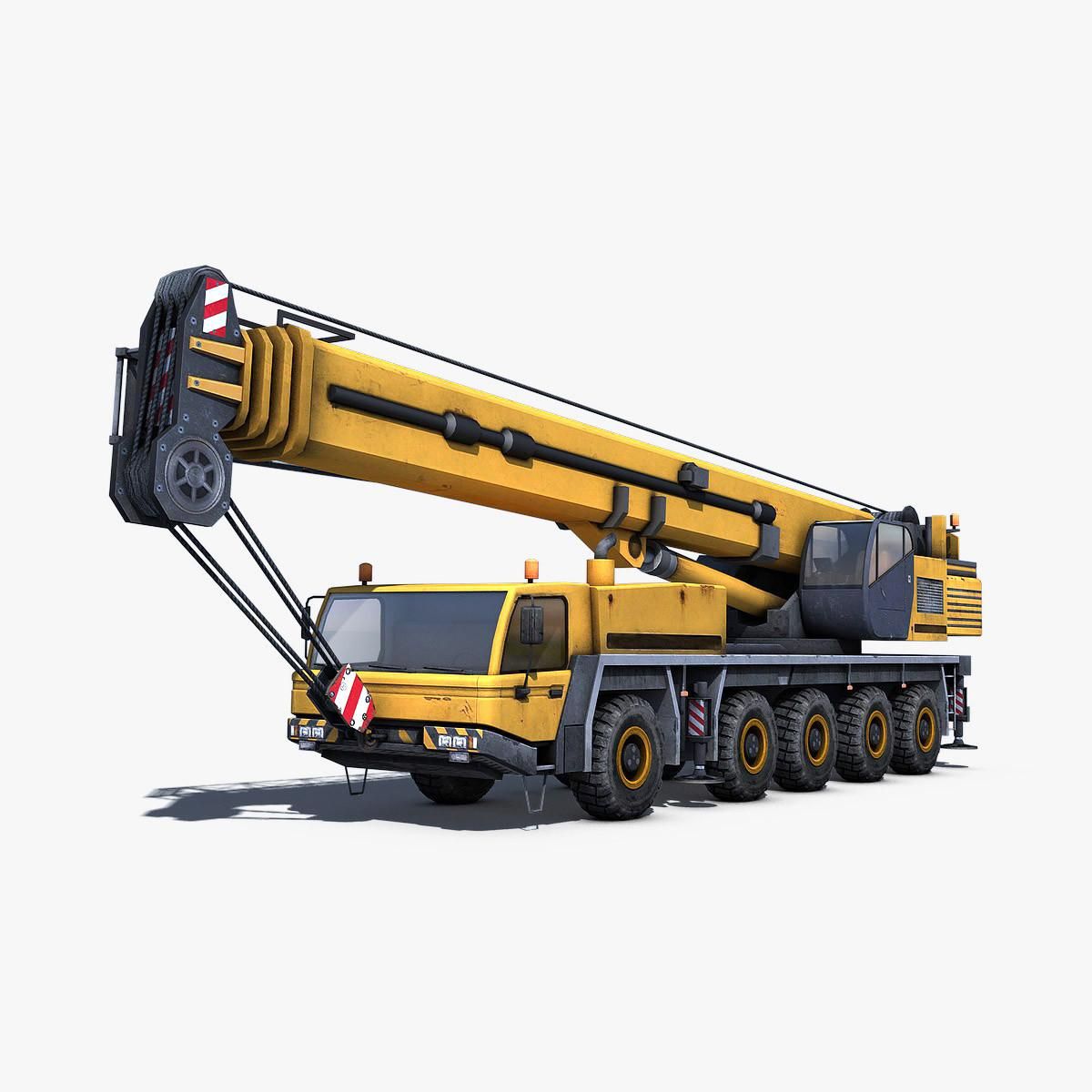Mobile cranes are a common sight in the construction sector. They are distinct from regular cranes since they are placed on crawlers and even have wheels. They are adaptable to a variety of settings, including those where it is challenging to erect long-lasting buildings. Because they can move rapidly and effectively throughout a construction site, mobile cranes have become more common in recent years.
Mobile crane: What is it?
A mobile crane is a cable-controlled crane that is mounted on rubber-tired carriers or crawlers or a hydraulically driven crane with a telescoping boom that is mounted on carriers shaped like trucks or as self-propelled variants. They are made to be simple to carry to a location, use with a variety of loads, and require little to no setup or assembly. They are, therefore, perfect for construction firms that may need heavy lifting and have several projects going on at once. These cranes are sometimes referred to as boom trucks, truck cranes, or truck-mounted cranes (TMCs).

Source: Pinterest
Mobile crane: How they operate?
Mobile cranes typically use a boom from which a hook is suspended using wire rope and sheaves. Any prime movers the engineers have at their disposal, working through a variety of transmissions, are used to drive the wire ropes. There have been instances of using electric motors, electric steam engines, and internal combustion engines. Transmissions on earlier cranes were often clutches. To match the “max torque at zero speed” characteristic of steam engines, this was later modified when using IC engines. A hydrokinetic component was added, leading to controlled torque converters. By controlling hydrostatic drives electronically, which is becoming the norm due to size and other factors, it is now possible to realise the operational benefits of this configuration.
Although design parameters sometimes limit their efficacy, some types of mobile crane can be transformed into demolition cranes by adding demolition balls, or into earthmovers by adding clamshell buckets or draglines and scoops.
Mobile crane: Types
According to their intended application, mobile cranes are divided into various groups. Among the more notable ones are:
Crawler cranes
Cranes that move on treads, or crawlers, are called crawler cranes. They can move loads up to 3,500 tonnes and are incredibly sturdy. They can go through uneven or muddy terrain more readily because of the crawlers. The need to move crawler cranes between job sites arises from the fact that treads do not handle highways smoothly.
Truck-mounted mobile cranes
Mobile cranes that are mounted on trucks with rubber tyres. This makes it possible to relocate them without having to transport them. Outriggers on truck-mounted cranes can rotate 360 degrees, extend horizontally or vertically, and can lift up to 1,300 tonnes.
Floating cranes
Floating cranes are frequently used to build ports and bridges or discharge massive amounts of cargo from ships. These can move complete bridge sections and lift weights to 10,000 tonnes when installed on boats or barges.
Rough-terrain cranes
Rough-terrain cranes are used in off-road places and unpaved locations where other cranes might not be able to reach. The engines on these cranes can generate enough power to move the boom and undercarriage in more difficult terrain.
Mobile crane: Uses
These large equipment pieces are used to lift and carry bulky goods in the construction sector. They can either be pulled by their engines or mounted on trucks and trailers. Mobile cranes can be used for a variety of tasks, including the construction of steel structures, ship unloading in ports, hoisting heavy things onto higher platforms, and moving merchandise from one container to another in warehouses. They are also used in other sectors, including shipbuilding, forestry, and mining.
Mobile crane: Precautions while operating mobile cranes
In fatal crane accidents, mobile cranes are among the most frequently involved. Following safety protocols is crucial whenever cranes are present on a job site since they have the potential to collapse under the weight of their excessive loads and become unbalanced due to poor operation.
On job sites where mobile cranes are present, safety measures like the following should be taken:
- The mobile cranes should only be operated by qualified personnel.
- To guarantee that crane operators can see the workers on the job site, they should wear high-visibility apparel.
- Never go beyond the advised load capacity.
- Before using, check the hooks, chains, and slings.
- Secure loads properly before hoisting them.
- Avoid abrupt accelerations, brakes, or turns that could rattle the load or disturbs its weight.
- When rotating a load, use taglines to regulate the arc and swing.
- Never lift the load over a crew member or the crane’s cab.
- Keep distance from power lines and other sources of electricity.
- If the weight of the load or a slope causes the crane’s wheels to lift off the ground, do not operate the crane.
- To inform workers of the crane’s movement, use operating signals and auditory alarms/alerts.
FAQs
What distinguishes a crane from a mobile crane?
Cranes can be divided into two primary categories: stationary cranes and mobile cranes. Static cranes hoist and transport loads along fixed paths and are permanent or semi-permanent structures anchored to the ground or building. A mobile crane may be transported from one job site to another since it is mounted on treads or wheels.
How much weight can a mobile crane lift?
The mobile crane has 10 tonnes to more than 400 tonnes of weight capacity (depending on what position and extension the boom is in). Lifting heights with radii of up to 80 metres.
Housing News Desk is the news desk of leading online real estate portal, Housing.com. Housing News Desk focuses on a variety of topics such as real estate laws, taxes, current news, property trends, home loans, rentals, décor, green homes, home improvement, etc. The main objective of the news desk, is to cover the real estate sector from the perspective of providing information that is useful to the end-user.
Facebook: https://www.facebook.com/housing.com/
Twitter: https://twitter.com/Housing
Email: [email protected]











